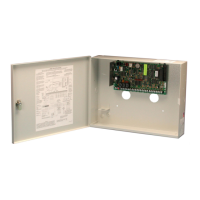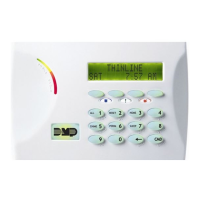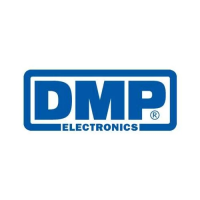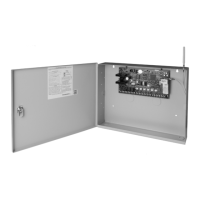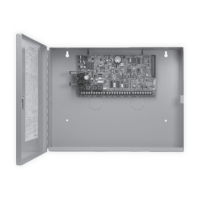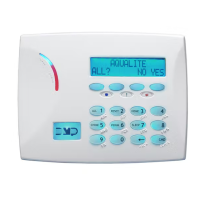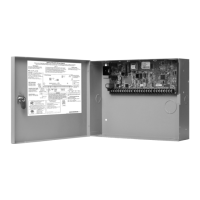Compliance
28
XR2400F Installation Guide
Digital Monitoring Products www.dmpnet.com 2500 N. Partnership Boulevard Springfield, MO 65803
UL 1610 AND 1076 SPECIFICATIONS
Central-Station and Proprietary Burglar-Alarm Units
27.1 Multiplex network capacity
The total number of panels assigned to a standard MPX or DNET receiving line of the SCS-1 Receiver System
must not exceed 90. This may be increased to 180 by setting the SNRM option to NO in the SCS-1 Receiver
system. This is to allow any signal from a XR2400F panel to be transmitted to the receiver within 90 seconds.
This allows Grade AA Multiplex service.
27.2 Opening/Closing reports
The Opening/Closing Reports option must be programmed as YES. See section 12.6 of the XR200 and
XR2400F Programming Guide (LT-0196).
27.3 Closing wait
The Closing Wait option must be programmed YES. See section 7.2 of the Programming Guide (LT-0196).
27.4 Proprietary dialer
The Model XR2400F provides Grade A proprietary service when configured as a digital dialer.
27.5 AA Network Communication
When HST network communication is used, a dialer line must also be used along with the Model 893 Dual Phone
Line Module to supervise the dialer line. The HST network Check-in time must be set from 01 to 06 minutes or AA.
This provides AA Central Station Service. See sections 3.2, 3.2.1, and 3.3 of the XR200 Programming Guide (LT-
0196).
The Model XR2400F Protected Premises Control Unit is suitable for Grade AA service when configured for
multiplex DNET or HST communication with SCS-1 receiving system. This configuration is approved for:
AMCX - Central Station Alarm Units
APAW - Police Station Alarm Units
APOU - Proprietary Alarm Units
This approval is for communication over public data networks, provided that the protected premise (XR2400F)
and receiving units (SCS-1) are listed. Additionally, the network device connected to the 462N Network Interface
Card must be listed for UL Fire and Shock hazards.
For combined burglary and fire alarm systems, UL has an established set of requirements that specify certain
hardware redundancies and communication protocols to ensure that indications of a fire or burglary are properly
transmitted at the time of their occurrence.
Typically in a combined system, two dialer phone lines are dedicated to the alarm. This limits the interruption of
normal business phone traffic caused by supervisory communication requirements of the alarm system. With the
DMP system communicating over a data network however, this interruption of business phones is avoided by
the panel's ability to send its traffic at any time directly over the network. The business phone lines are then
used only to send a nightly Recall Test report or the report of an actual alarm to the central monitoring station.
This eliminates the monthly expense of two phone lines dedicated to the alarm.
The DMP products meeting the UL requirements include the listed Model 893 Dual Phone Line Module used in
supervising two separate analog phone lines and the Model 462N Network Interface Card listed as a
supplementary signaling device for commercial fire systems.
If the requirement for the two dedicated phone lines is made by the local AHJ for the purpose of avoiding
situations where the burglary/fire alarm system is incapable of communicating, the DMP panels have a built-in
ability to seize the phone line and interrupt any call in progress as required by NFPA and UL. Instructions to the
system installer for correctly wiring of the telephone jacks is also included in all DMP installation guides as an
added measure of ensuring the system's communicating ability.

